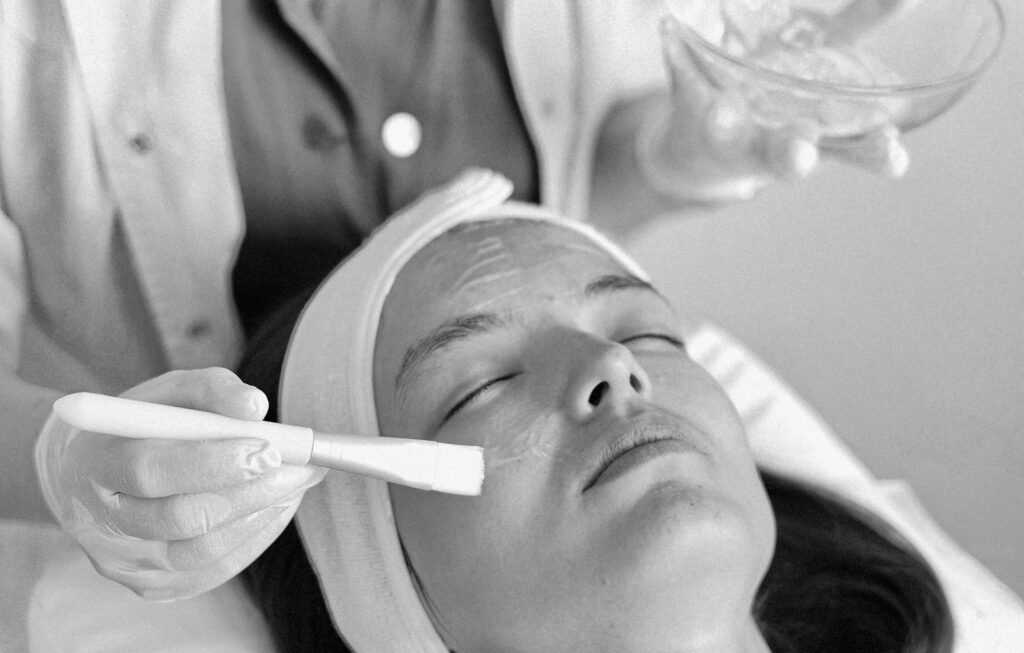In the quest for radiant and flawless skin, many beauty enthusiasts are turning to the transformative benefits of chemical peels. These skincare treatments have gained immense popularity due to their ability to rejuvenate and revitalize the skin, leaving you with a refreshed and youthful complexion. In this article, we’ll delve into the world of chemical peels, exploring their incredible potential to transform your skin and unveil a newfound radiance.
Understanding Chemical Peels
Chemical peels are non-invasive cosmetic procedures that involve the application of specialized solutions to the skin’s surface. These solutions consist of various acids, such as alpha hydroxy acids (AHAs), beta hydroxy acids (BHAs), and trichloroacetic acid (TCA), each catering to different skin concerns and depths of treatment. The solution works by exfoliating the outermost layer of the skin, encouraging the shedding of dead skin cells and stimulating the growth of new, healthier skin.
The Transformational Benefits of Chemical Peels
Improved Skin Texture:
Chemical peels work wonders in improving skin texture. By exfoliating dead skin cells and promoting cell turnover, they smooth out rough patches, fine lines, and even acne scars, leaving you with a smoother and more refined complexion.
Even Skin Tone:
Uneven skin tone, caused by sun damage, pigmentation issues, and age spots, can be effectively addressed. These treatments target areas of hyperpigmentation, revealing a more balanced and even skin tone.
Reduced Acne and Pore Size:
Chemical peels with salicylic acid are particularly beneficial for those struggling with acne-prone skin. They penetrate the pores, unclogging them and reducing the occurrence of acne. Additionally, the peels help minimize the appearance of enlarged pores.
Collagen Stimulation:
Some chemical peels, especially those containing TCA, stimulate collagen production. Collagen is crucial for maintaining skin elasticity and firmness, resulting in a plumper and more youthful-looking complexion.
Radiant Glow:
The exfoliation process triggered by peel reveals fresh, new skin cells, leading to a radiant and luminous glow that’s hard to achieve through regular skincare alone.
Finding the Right Chemical Peel for You
Not all chemical peels are created equal, and choosing the right one depends on your skin type, concerns, and desired outcomes. Consulting a dermatologist or licensed skincare professional is essential to determine the most suitable peel for your unique needs. A professional can recommend the ideal type, concentration, and frequency of peels to achieve the best results without compromising your skin’s health.
Aftercare and Recovery
After undergoing the treatment, proper aftercare is crucial to ensure optimal results and minimize any potential side effects. Your skin will be more sensitive to the sun, so wearing sunscreen with a high SPF and avoiding prolonged sun exposure is essential. Additionally, a gentle skincare routine featuring hydrating and soothing products will aid in the healing process.
The power of chemical peels to transform your skin is undeniable. Addressing skin concerns and revealing a radiant complexion, these treatments greatly boost confidence and self-esteem. However, it’s important to approach this treatment with careful consideration and professional guidance to ensure a safe and effective experience. With the potential to rejuvenate and revitalize, chemical peels stand as a remarkable option on your journey to achieving the skin of your dreams.
As we explore the world of transformative skincare, another remarkable procedure emerges on the horizon: microneedling. Just as chemical peels have shown their prowess in rejuvenating skin, microneedling offers its unique set of benefits in the realm of skin transformation. While peels focus on exfoliation and resurfacing, microneedling takes a different approach, harnessing the power of tiny needles to stimulate the skin’s natural healing processes. Let’s delve into the intricacies of microneedling and discover how it complements the results achieved by chemical peels.








